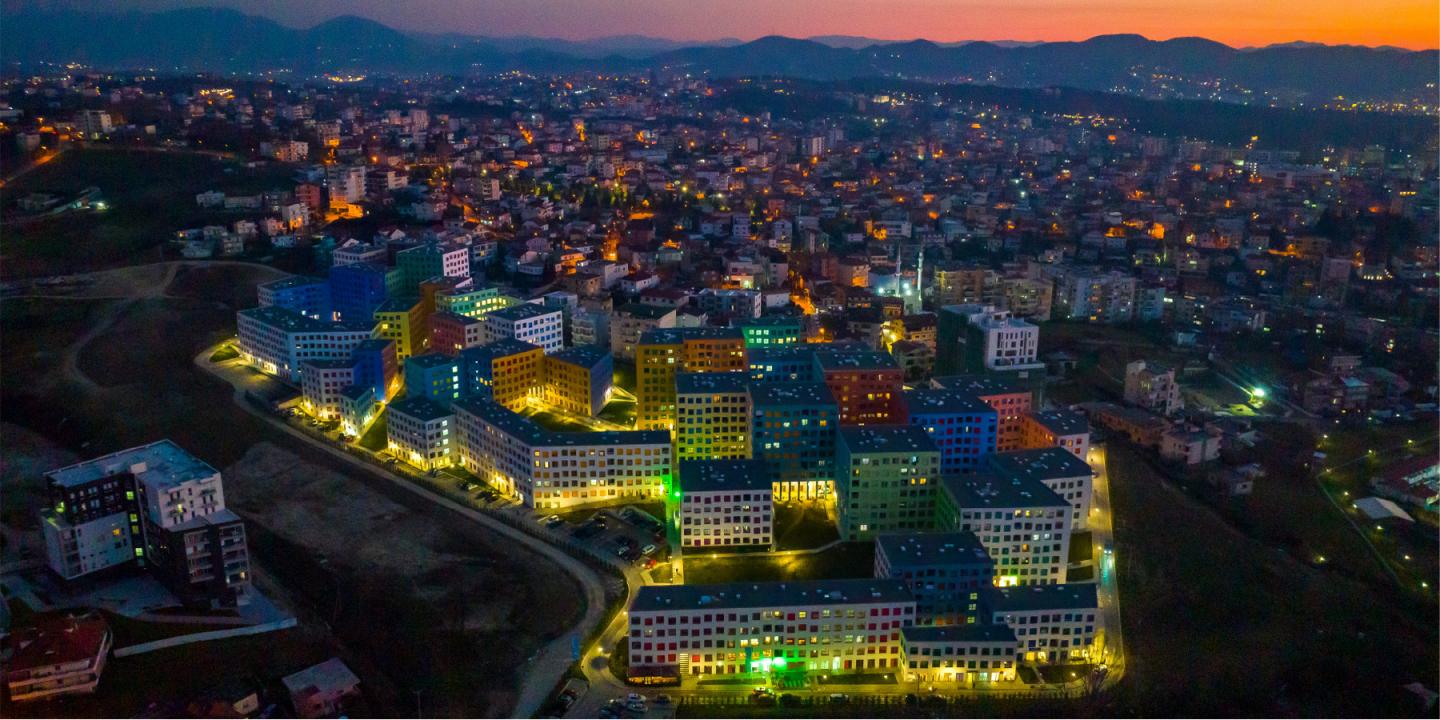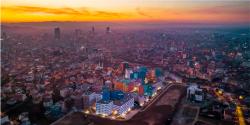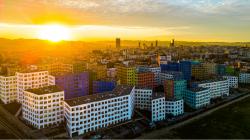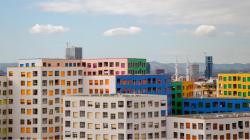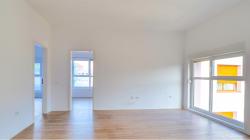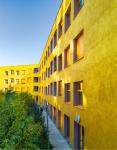The project covers a plot of land in the eastern part of the city, bordered by mountains and former communist quarters to the north, and informal settlements from the 1990s to the south. The site has a very prominent slope: the difference between the lowest and the highest point is 27 meters, an equivalent of a nine-story building.
Inspired by the configuration of the informal settlements, OMA proposes a chequerboard-like pattern of blocks and courtyards. The sloped terrain allows for every building to look over the other, creating different views over the surroundings. High density is achieved while leaving 70% of the site open for public plazas and green spaces. The development is car-free and all parking is underground. The main street running through the development brings together commercial activities and connects Mangalem 21 with the future Metrobosco green belt and the new ring road planned by the municipality.
The abstract chequerboard pattern turns into a continuous array of habitable spaces by elaborating the tangent corners into architectural entities. Three typologies emerge: the ‘straddle core’, a vertical circulation shared by two adjacent buildings, the ‘straddle apartment’, an apartment spanning over two adjacent buildings, and the ‘kissing corner’, two tangent building corners.
The project's manifest use of color is a reference to the initiative of Tirana’s former mayor Edi Rama to paint the city’s communist-era apartment blocks in the early 2000s. A limited color palette, applied in various combinations to exterior walls, window frames and shutters, gives each façade its own, unique expression. The openings are organized in a system that uses standardization to create diversity by shifting their position and subdivisions. The roofs are treated as a fifth façade as the stepping configuration of the development makes them visible from the upper buildings.
2017
2023
Project Name: Mangalem 21
Location: Eastern Tirana, Albania
Site Context: Bordered by mountains and former communist quarters to the north, and informal 1990s settlements to the south
Topography: Steeply sloped terrain with a 27-meter level difference (equivalent to a nine-story building)
Urban Typology: Chequerboard-like pattern of alternating residential blocks and courtyards
Density: High-density layout with 70% of the site dedicated to public plazas and green spaces
Circulation: Car-free development with all vehicular access and parking placed underground
Connectivity: A central spine street integrates commercial activity and links the site to the future Metrobosco green belt and the new municipal ring road
Architectural Typologies:
Straddle Core – a shared vertical circulation core between two adjacent buildings
Straddle Apartment – residential units spanning two separate blocks
Kissing Corner – tangent corners where two buildings meet to form a spatial junction
Façade Design: Limited color palette applied in varied combinations to façades, window frames, and shutters, referencing Tirana’s post-socialist color initiative
Opening System: Standardized window openings arranged with shifts in position and subdivision to create diversity
Roof Design: Treated as a “fifth façade,” highly visible due to the terraced site configuration
Architectural Style: Contemporary architecture, with contextual and alternative urban influences
OMA STUDIO - https://www.oma.com/
KONTAKT Ltd - https://www.kontakt.al/
